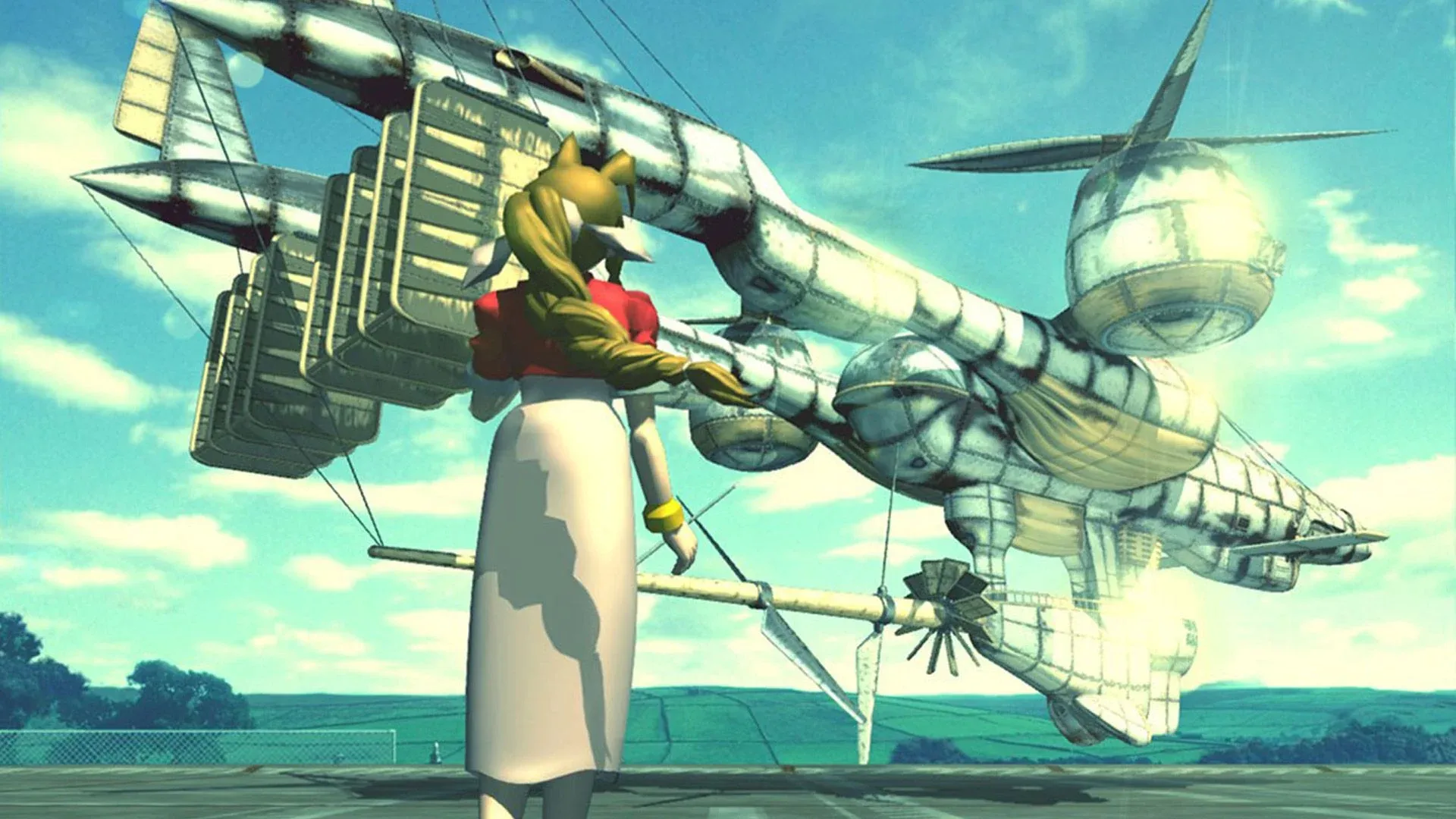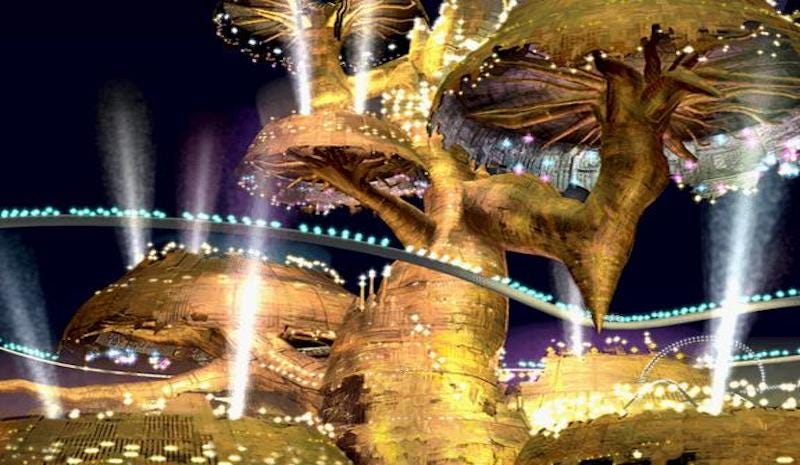How Final Fantasy VII Nailed the Mini-Game
Mini-games can be boring and tedious, but Final Fantasy VII gets them right

Final Fantasy VII is renowned as one of the greatest JRPGs of all time (if not the greatest). As I replayed it, I noticed that the game flow never feels bogged down by repetition and keeps the player thoroughly engrossed with new and interesting mini-games the entire length of the story.
By incorporating mini-games into the actual storyline, Final Fantasy VII changed the monotony of the era’s top down turn-based RPGs. These mini-games don’t initially exist for experience, power-ups, or items acquisition; they exist to tell a story. They are not designed to trigger OCD tendencies, nor do they feel tedious and mind numbingly boring.
So how did they get Final Fantasy VII perfect mini-games? Answering this question requires us to consider other mini-games as a point of comparison.
Mini-games as we know them
A mini-game is defined as any “game within a game”. I’d further define these mini-games as being a smaller game or repetitive task in the form of a game performed in order to acquire something of value.
Mass Effect hacking exists for credits, weapons, intel, or prototypes. It’s optional, and becomes a mindless chore after the first few hours of the game.
There are also whole video games inside video games, an example would be Journey of the Prairie King in Stardew Valley. Fun, but again optional. Celeste has a similar arcade game, Celeste Classic Pico-8.
Fishing is a popular optional mini-game in many titles, from NieR to Legend of Zelda. Always fun, never necessary.

Red Dead Redemption has card games, from Poker to Blackjack. I could sit hours and play cards and neglect my mission. Another popular card game is Gwent from The Witcher.
Final Fantasy X had Blitzball, a sort of underwater water polo. I never took to Blitzball or enjoyed it.
Skyrim had lockpicking, which is repetitive and simple for a game sometimes played over 100 hours.
And these are just a few examples. Mini-games can be found in Metal Gear Solid, Monkey Ball, Animal Crossing, BioShock, Grand Theft Auto…the list goes on.
Final Fantasy VII’s approach
What did Final Fantasy VII do differently?
It took the mini-game and integrated it within the story. The developers made mini-games fun enough that you actually sought them out (with the Gold Saucer being a great example of this). There were no rewards for mini-games in the initial play through (although going back to the Gold Saucer later might help you get a key piece of gear or materia).
I found that the story flowed much better by using mini-games as a key storytelling ingredient.
These mini-games made the story
Midgar Expressway
Final Fantasy starts off with its first story driven mini-game on the Midgar Expressway. In attempt to escape Shinra, Cloud smashes through the glass of a building on a Hardy-Daytona motorcycle fleeing pursuers while protecting a low riding turquoise pickup truck carrying the team. Accelerate, decelerate, right, left maneuvering to smash the assailants with the Buster sword all while keeping an eye on your teammate’s health bars. The cutscene that leads up to this mini-game along with the music, and a grand finale boss fight against Motor Ball is exhilarating. To replay this, visit Wonder Square at Gold Saucer and hop on G-Bike.

Fort Condor
The team arrives at a fort near Junon to find a giant condor incubating an egg atop a mako reactor. Cloud and his team must fund soldiers to protect the poorly defended fort in order to fight Shinra’s military invasion. Shinra wants to eradicate the condors and the people living at Fort Condor to obtain the lifestream sucking Mako Reactor’s Giant Materia. You felt a sense of duty and empathy for these people on their last legs protecting something beautiful. Again, the music lulled you into a sense of peace and trust for a community being violated by Shinra. The player is drawn to protect the majestic bird, and I dropped most of my earnings on this mini-game to save the fort and unveil the secret Phoenix materia.
The first run is relatively simple to win, setting defense units in back, traps on high traffic paths and offensive units in front. And it’s also high stakes- if Shinra reaches the top, it’s assumed the people living at the fort perish along with the condor and Shinra taking hold of the Giant Materia. It’s a fun mini-game and the player can return to play multiple times throughout the game with progressive difficulty.
Junon Parade March
Out of all the mini-games, this was the one I failed at most consistently. Cloud must impersonate a Shinra soldier and is tossed into their ranks with minimal practice. The live TV ratings up the ante as you must time your entrance perfectly. The second part of the task is a bit easier. President Rufus arrives and we put on a synchronized show with Red XIII chuckling in the background. Rufus’s mood gauge is displayed, the points will earn you a surprise item no matter how well you did.

Chocobo Racing
The internet and guidebooks have pages worth of information on Chocobo breeding and racing, so we will just skim the surface. To get some of the best end game items, you must race and breed Chocobos to obtain the almighty Gold Chocobo. This can take hours and has two parts; patience and luck. It will cost a lot of money and you’ll be putting your controller down while your Chocobo runs its 200th race. Nevertheless, it’s a key storytelling element in escaping Corel Desert Prison and discovering more of Barret’s backstory.
Chasing the Red Submarine in Torpedo Attack
We’re off again, and on the hunt for Huge Materia. The music sets a dramatic sense of urgency as Huge Materia is loaded onto the red submarine. The party hijacks the generic neighboring grey submarine after dealing with a few guards. Cloud has a brief bout of claustrophobia and panic before his teammates reassure him. The beeps and flashes of the console come to life, radar ticks, the engine hums, and a deep sea melody takes us where few video games have gone before; the ocean floor.
This mini-game has many components. You must not collide with mountainous ocean floor, avoid minefields, and you have a timer of ten minutes. Even with these obstacles, the sub mini-game flows smoothly as you glide along, lock on to your target and release honing missiles at the red submarine. Your screen displays gauges and meters for speed, depth, a compass as well as a timer. The graphics on this mini-game may feel rudimentary, but you must find a delicate balance of dodging Shinra sub missiles at the same time you fire yours all while navigating. Find this game at Wonder Square to replay.
Digging for Treasure in Bone Village
Another key story mini-game is digging for the Lunar Harp in Bone Village. You must tell the foreman what kind of treasure you are looking for, hire your archeologists and put them in place, set the bomb, and BOOM — the workers calculate the tremors and point to the dig spot. With luck, you’ll walk away with a key item, and later in the game a way to return to Sector Five.
Battle Square
The first time in Battle Square is mandatory story based to obtain the Keystone. Fight Dio and show him what you’re made of. After progressing the story, it’s an optional mini-game. The concept is to survive eight rounds, each round harder than the last and having a handicap every time you progress. Your equipment and materia are absolutely KEY in this mini-game, and along with Chocobo racing will earn you some of the best items in the game, including your ultimate limit break.
Snowboarding Down Great Glacier
There is a reason I saved this mini-game for last. The events leading to the Great Glacier are devastating and the team is grief stricken and in crushed after Sephiroth’s grand entrance. We will never forget the power of Masamune and the battle with Jenova in one of the most shocking moments in video game history.
So what better way to cool down after all that crying that to hurdle down an icy snow-packed mountain on a child’s snowboard? This mini-game was FUN. You have multiple paths and balloons that you can collect for points. You fly down this hill at supersonic speeds, dodging moogle snowmen and can get some pretty sick airtime. No time requirements or points needed for this mini-game, and the absence of music replaced with the howling of frozen winds seems an intentional way to reflect on the events at City of the Ancients. This game can also be found at Wonder Square.

And there’s more!
I only mentioned a few of the mini-games in Final Fantasy VII. Wonder Square in Gold Saucer has a few non-storyline smaller mini-games like Wonder Catcher, 3D Battler, Super Dunk, Mog House, Gil Exchange. The most replayable non-story mini-game for me would be at Speed Square. The roller coaster shooting mini-game is extremely fun, and you can rack up points to earn some pretty cool items.
Final thoughts
There are a lot of reasons why Final Fantasy VII is an amazing game. But what stood out to me as an adult replaying the game is how nothing ever felt like a grind because the gameplay and mini-games always kept play interesting and fresh. They shifted the mood of a tense scene and made it playful, or took a funny moment and gave it a sense of urgency. Final Fantasy VII took chances and demonstrated the variability of gameplay and flexibility by veering off traditional RPG paths. All while giving the player to a chance to revisit favorite mini-games that were for the first time a major storytelling element.
I would love to hear your favorite video game mini-games. Let me know in the comments!
